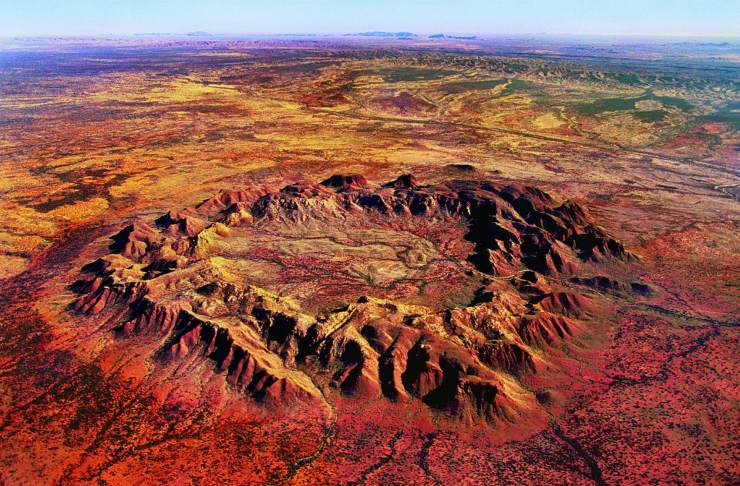The asteroid that hit the earth at the time of the dinosaur extinction was at least 10km diameter.
撞擊地球導致恐龍滅絕的小行星直徑至少是10公里。
The Permian mass extinction is even more severe,
二疊紀生物大滅絕更加嚴重,
so the asteroid that hit it that time must have been even larger, perhaps 15km in diameter.
所以當時撞上來的小行星應該更大,可能達到直徑15公里。
It seemed the perfect answer.
這種解釋看起來很完美。
A meteor the size of Manhattan had wiped out most of life on earth.
一顆大小如同曼哈頓的隕星消滅了地球上絕大多數生物。
Yet something didn't add up.
然而這還是有些說不通。

Nothing that size could hit the earth and not leave a trace.
但凡撞擊地球的天體都不可能不留痕跡。
The meteor that had wiped out the dinosaurs had left a giant fingerprint in the shape of a crater,
消滅恐龍的那顆隕星在墨西哥海岸留下了一個隕石坑傷疤,
just off the coast of Mexico, where was the Permian crater.
那么二疊紀撞擊坑又在何處呢。
No matter where they looked, nobody could find anything dating from the Permian era,
科學家們四處搜索,但無論如何也找不到符合二疊紀天體碰撞事件的隕石坑,
but then a scientist from London came up with a totally new idea.
后來一位來自倫敦的科學家提出了全新的觀點。
Adrian Jones models the effects of impacts on the earth's crust.
Adrian Jones模擬了地殼撞擊的結果。
He now suggested geologists were searching for the wrong thing.
他認為地質學家們是在尋找不存在的東西。











